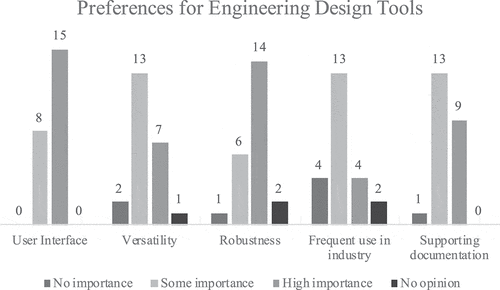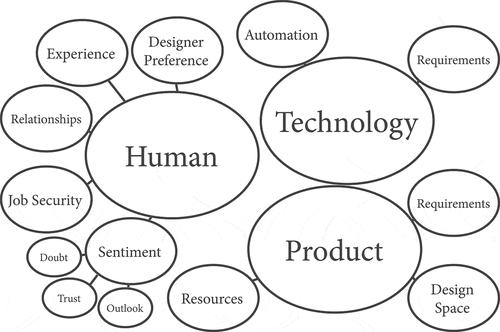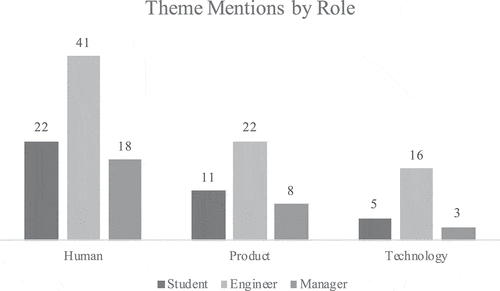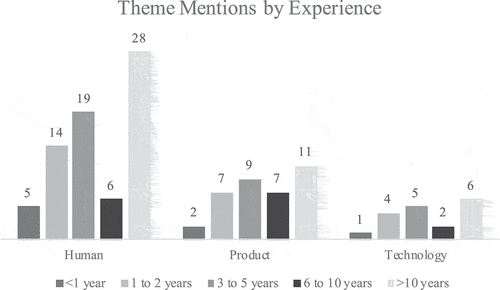Figures & data
Table 1. A breakdown of roles of participants
Table 2. A breakdown of education levels of participants
Table 3. A breakdown of experience levels of participants
Table 4. A breakdown of proficiency levels of participants
Table 5. A breakdown of how participants heard about the survey
Table 6. A list of terms that were presented to participants and the frequency with which they had heard of the terms
Figure 1. User preferences of 5 unique design tool criteria, ranked on a 3-point Likert scale with an additional option of “no opinion.”

Figure 2. A mind map of the themes developed based on the survey data. the nodes emerging from the three main themes (human, product, technology) are the codes which were generated from participants’ answers. the size of the bubbles has no correlation to the number of mentions and indicates hierarchy only

Data availability statement
The data that support the findings of this study are openly available in Mendeley at http://doi.org/10.17632/y83cp6tgmm.1 (Vincalek, 2021).


